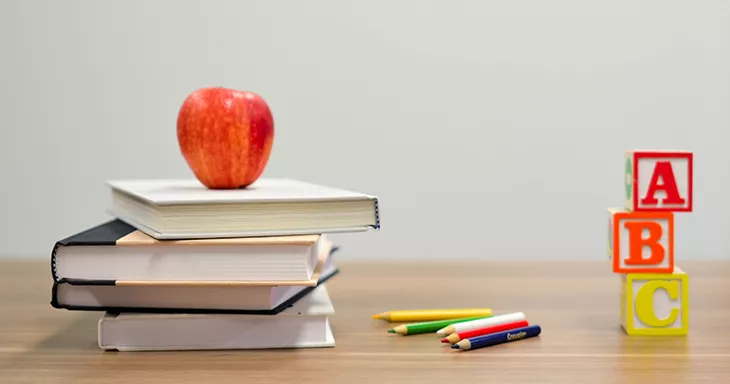Free Suggestions For Choosing Italian Kindergarten Teaching Didactics
Wiki Article
What Kinds Of Teaching Tools Are Required In The Italian Primary Or Preschool?
A primary or a nursery Italian school needs various teaching tools in order to help their students learn and develop. Here are a few materials you might need Textbooks/workbooks: These materials are necessary for the teaching of core subjects like Italian math, language, and science.
Materials for Art and Craft These include crayons, paper, paints, brushes and other tools that students may use to create creative projects.
Manipulatives: Manipulatives like puzzles, blocks, and games can aid students in developing their skills in problem-solving as well as critical thinking.
Technology for education Computers (tablets, laptops, etc.).) and other technological devices are available to help students learn and can give them extra tools.
Visual aids like posters maps, charts, charts and many others can aid students understand and remember crucial concepts.
Book: A variety Italian-language books for kids of all ages will help to encourage reading and language development.
Musical Instruments Musical Instruments: Using musical instruments such as xylophones or tambourines can help teach the art of rhythm and appreciation for music.
Safety materials are essential to the well-being and safety of students and staff. They include posters and fire extinguishers, as well as emergency procedures.
Sports equipment: Cones balls, and various other sports equipment are used in physical education classes or outdoors play.
Italian primary schools and nurseries will require an an array of materials to stimulate and engage their students. See the recommended sostegno infanzia for site tips.

What English-language didactic cards are suggested by Italian nurseries for their children?
English didactics cards can be used in introducing youngsters to English in Italian nursery schools. These are just a few types of English didactics cards that could be recommended. Alphabet Cards: Alphabet-based books aid youngsters to master the English alphabet, as well as the sounds that go with each letter. You can use illustrations that include animals or other objects to start with each letter.
Vocabulary cards: Vocabulary cards can help children learn common English terms and their significance. These cards feature pictures or images of animals, objects and other people that have an English word under it.
Sight words cards: These cards aid children learn common English words that are frequently used in both written and spoken language. These cards can feature simple sentences or phrases with the words highlighted.
Phonics Cards: Phonics cards can be used to aid children understand the relationship between English letters and sounds. They could feature pictures of objects or words, along with the appropriate phonetic sounds printed on the card.
Conversation cards. These cards assist children develop their English conversation skills by engaging in conversations between themselves and their caregivers. The cards could include simple questions or ideas to encourage the children to discuss their ideas.
Select English didactic cards for kids that are engaging and age-appropriate. They can be utilized by caregivers and teachers to develop engaging and fun English language activities for kids that stimulate their curiosity and excitement. Read the most popular schede didattiche inglese sostegno for site tips.

What Resources For Teaching History Are Required In Schools Of Italy?
Italian nurseries utilize history resources to help their students learn about the past. They also show them how to understand the present and give students a sense of belonging. A few examples of history teaching material that might be required are the following: Age-appropriate books Books that focus on the historical past, individuals and their cultures can help children build an interest and feelings of connection to the past.
Picture and artifacts. Artifacts and pictures can aid children in visualizing as well as appreciate and comprehend historical events and lifestyles.
Children can study the past through timelines and maps.
Storytelling: Storytelling can be an effective tool to introduce children to historical events and people in a way that's entertaining and memorable.
Dramatic Play: Dramatic plays allow children to recreate historical events and experiences, and gain a better understanding of their significance.
Field trips: Field trips to historical sites in the area and museums provide children with opportunities to engage in hands-on activities and to learn about history in the real world.
The history materials must be appropriate for children's age and sensitive to the cultural differentiating factors. They can be utilized by teachers and parents to create interactive and engaging historical activities that encourage children's enthusiasm and enjoyment of learning. Check out the recommended materiale didattico storia for blog examples.

What Geography Didactic Cards Should Italian Schools Use?
Geography cards are a fantastic way to introduce basic geography concepts to young children. Here are a few examples of geography didactic cards you may find useful: Continent Cards: These cards can help children learn about the continents, their sizes and natural characteristics.
Country Cards: Country cards provide children with information on different nations, including flags, countries, locations languages, and other cultures.
These cards are a fantastic option to allow your child to understand the significance of natural landmarks and natural features from all over the world.
Animal cards: Animal cards aid children in learning about different animals and their habitats around the world, including their diet, behaviour and adaptations.
Weather cards are an excellent method of teaching children about different kinds of weather, their impacts on the environment, and natural disasters.
Natural Resource Cards: These cards help kids learn about mineral water, forest, and minerals and other natural resources.
Choose cards that are engaging, appropriate for ages 0-12 and engaging for young children. Teachers and caregivers are able to use these cards to play fun, interactive geography activities. They can increase children's curiosity in learning about various cultures and nations. Read the recommended schede didattiche geografia sostegno for website recommendations.
